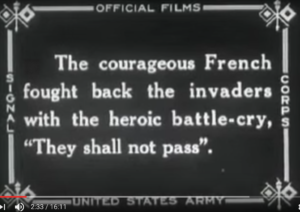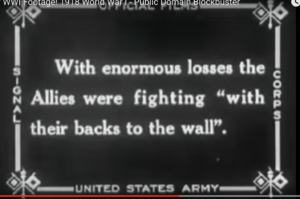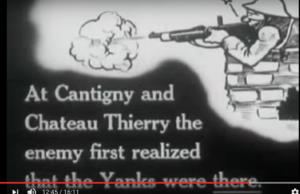HNC Photography, IFC - Coursework, Introduction to Film Culture Blog, Part three - Fact or fiction? Truth or lies?, Project 2 - The birth of propaganda
The films of the Spanish – American War.
Interestingly the Spanish-American War was the first war to be covered by cinema cameras, and there is an extensive library of footage shot from the available at the Libriary of Congress (https://www.loc.gov/collections/spanish-american-war-in-motion-pictures/about-this-collection/).
These provide a fascinating insight into the origins of the recording of war – something that is now very familiar place, with images of conflicts around the globe transmitted into our home daily. It is often said that the first war to be fought in front of the camera was Vietnam, this show that this is not the case, merely the development of what had started many years ago with Edison and his peers.
These first images of conflict, do not show the conflict per se but related events. The movies start very much in the Lumiere mould of actualities with for example a single shot of newspaper correspondents running to file their story.
However, over time they developed a basic narrative structure in “Love and War” where the film over six scenes tell the story of a boy going off to war a private and returning triumphantly a hero promoted to captain.
What was the purpose of these films? Propaganda? Education? Entertainment? This is a difficult question. Given that cinema was a such a new technology – almost a magic box to those that saw it entertainment/spectacle had to be a driver; but no one goes to record war without wanting to produce propaganda or at the very least educate the viewers.
This propaganda hard to see in the actuality films from the Spanish -American War, however, in “Love & War” the propaganda element is evident to the viewers. “Love & War” shows how war has transformed our protagonist from lowly private to Triumphant Captain, winning the girl and the adulation of his family.
Films of WWI
Looking through the video on the Imperial War Museum’s website of the films made during World War 1 ; there is a definite shift towards propaganda. That is the film are made for a particular purpose and seem to show strength and the counties ability to win the war.
“American Troops in London” made the year America entered the war) show significant numbers of US troop marching through famous parts of London including taking a salute by King George V.
I film like this shown the British public demonstrates the arrival of the USA to the war, which was giving much-needed support to the British after close to 3 years of war with Germany.
World War 1 brought the British public together like never before, with a great sense of national duty. However, it did start to cause strains. A film like this shot but the Ministry of Information is clearly a morale booster. The first caption “HAIL COLUMBIA! Historic march through London of the first contingent of America’s great army”, show that that the America are a good boost. “LONDONS MIGHTY WELCOME. The Cheering crowd in Trafalgar Square” shows to the country at large the welcome they, have received in the Capital to encourage this to spread to the rest of the country. This welcome reinforced clearly showing a salute by the King and Prime Minister Lloyd George and many other dignitaries.
A day with the Welsh Guards” http://www.iwm.org.uk/collections/item/object/1060000204
This is an early example of a recruitment film. 13 scenes show the “good army life” (even showing pay day something that would be important the bread winners in working class areas who would be leaving job to join the Army), culminating in a recruitment plea, playing on national Welsh pride, not just British.
The wreckage of Schütte-Lanz SL11 at Cuffley. (http://www.iwm.org.uk/collections/item/object/1060005391)
This film shows the success of the allies of bringing down a Zepplin. The viewer is shown, the clearing of the wreckage; the captions explain how much was destroyed and captured. However, the film is very good natured in appearance the soldiers are smiling and happy in the work as are the images of the captured German Zeppelin crew there an amiable feel as if to show the viewers how pleasant an affable war was not showing the horrors the young men were experiencing in trenches.
Moving away from the films available at the IMW to Youtube this again expands on the images of war. Here are some more raw footage showing the action in brief clips.
The film above I don’t know its origin or original purpose, but it clearly shows the brutality of the first modern war.
Horses of WW1
Although edited in modern times the footage was shot as a documentary record of the war and is sobering, and illustrate. How unprepared the world was for WW1 – still reliant of horses at the same time as tanks, heavy artillery and warplanes were developed.
Perhaps the most moving of these is the film provided in the course notes
This film made by the US army in 1918 summarises WW1 and the US’s involvement in the conflict. This is quite a graphic film for its day showing the horrors of war, and it doesn’t shy away from the fact the war was hard.
It does show the US as the hero’s, arriving to help the struggling allies, and the captions do lean in that direction, but overall all the caption are positive, even when showing hard times.



The film is very much but together to show to the American public that while the war in Europe was hard the Americans were needed and it was a good cause.
